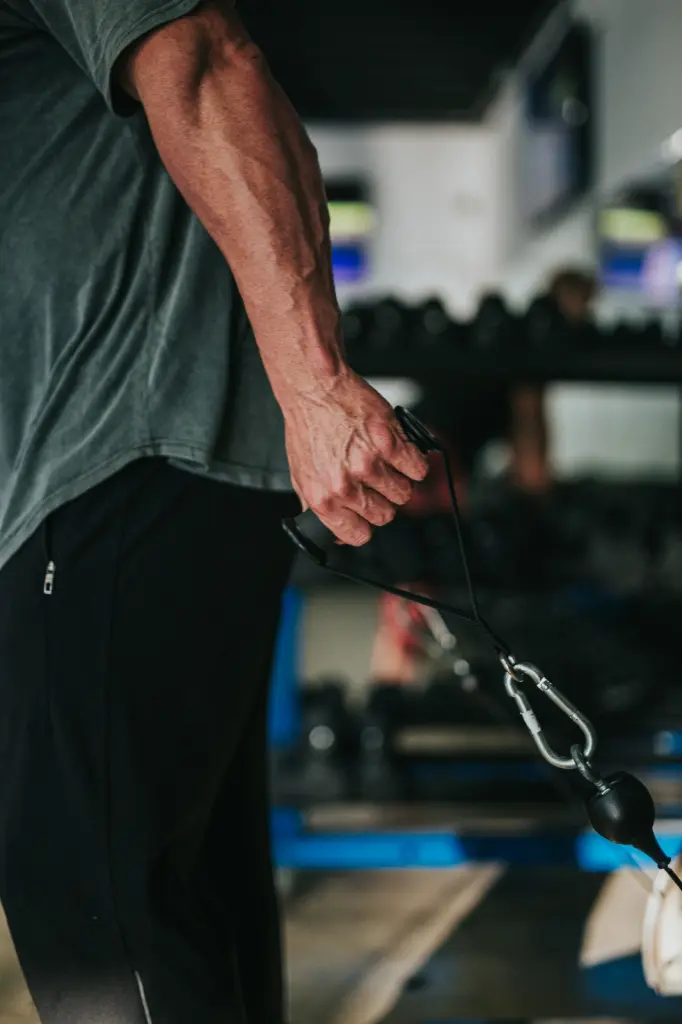7 Proven Ways to Choose the Best Weights to Start Lifting With
B
eginning your fitness training with weightlifting may be a little tiring, especially when you have no idea on how to start or the equipment to choose in your initial stages. For anyone who is attempting to change their lifestyle, whether it be for better health, muscles, or post-bariatric bypass, the right weights must be selected to support the goal, for effectiveness, safety, and longevity.
In this beginner’s guide, you will learn everything you need to know about picking the right weights to lift, forgetting the questions like how to start lifting weights or when can you start lifting weights after bariatric bypass surgery.
7 Proven Ways to Choose the Best Weights to Start Lifting With
1. Benefits of Lifting Weights
If you are interested in knowing the kind of weights you should start with then it is essential to discover why weight lifting should be included in your exercise regime. As much as cardio is beneficial for the heart health, weightlifting has some other benefits of its own. Here’s why weightlifting should be on your fitness radar:
Boosts Metabolism
One of the best things that come from weightlifting is the after burn effect scientifically referred to as Excess Post-exercise Oxygen consumption (EPOC). In other words, your body goes on burning calories for the next 24-48 hours after you have trained with weights even if you are immobile. This is even more dramatic than with cardiovascular exercise only, which means that weightlifting is a must if your goal is to lose fat in the long run.
Enhances Bone Density
Reduced BMD and elevated fracture risk comes from a continuous bone loss with age thereby raising the rate to osteoporosis. This is an exercise regime that helps to make your bones and muscles become as hard as iron. This is because the Remodeling process is affected by resistance training and thus improves bone density and density entails minimal probabilities of bone breakage.
Improves Cardiovascular Health
This effectively dissolves any argument that weight training does not help to reduce the blood pressure, cholesterol and the blood flow like aerobics or running. If you include weight-lifting exercises in your exercises plan, then your probabilities of developing heart problems would decrease, especially if you also perform aerobics.
Mental Health Benefits
It has been demonstrated that strength training can be useful to decrease levels of anxiety and symptoms of depression. That is, all the weightlifting workouts release hormones called endorphins which can actually minimize stress, changes your mood and general mental health for the better. Furthermore it may lead to more ‘self-fulfillment’ as a result of achieving lifting goals for instance.
Supports Weight Loss
Lifting weights is a critical component of exercise for any person that wants to shed some weight, including those who have had bariatric surgery. To achieve fat loss while building lean muscles it is recommended that people engage in lifting weights while tearing down the fat. This not only serves to the purpose of increasing the levels of fat loss but also helps in the maintenance of the outcome in the longer run.
2. How to Start Lifting Weights as a Beginner
The following is a guide on how to get into Crossfit without getting into serious threats of any form if injury.
Start Small
Probably the worst mistake that one can make in exercising is beginning by lifting weights that are very heavy. Although there is tendency to increase performance by hard work, then it is wiser to lay down some roots first. First pick a weight, that you can handle for at least 12-15 reps in a set. For most people starting the bodyweight training, this therefore implies that this has to be done using dumbbells that range from 3 – 10 lbs depending on the strength achieved or the general fitness level of the individual.
Gain form
In the first few weeks of training, it is advised that the beginner should not worry about weight but concentration should be on form. If one fails to maintain good form then he or she is likely to be injured and this will hold him or her back. You should know perfectly well the basic compound movements which include squats, dead lifts and presses since they train several muscles at once and yield greatest value in the least of time.
Warm Up Properly
Perhaps the most important is that one should properly warm up before do some exercises. Before you begin weight training, you need to spend 5 – 10 minutes getting your muscles ready using walking, cycling, or dynamic stretching. For example, regards warming up as an essential step before exercising since it allows your body to prepare for exercise, makes the muscles to get adequate supply of blood and as well reduces occurrences of strain.
Incorporate a Balanced Routine
Make sure your workout plan hits all the major muscle groups: There is the lower body which includes legs and back, upper body comprising of chest, shoulder, arms and abdominal or the core body. Having a balanced workout program will then help avoid such imbalances or issues that may at times occur and contribute to the injury of the muscles. Most of the newcomers can perform a full body workout at least two or three times a week to best begin with.
3. Best Weights to Start Lifting With
Weight selection makes for a crucial factor in the advancement because, at times, the gains can stall. Below are the types of weights that every beginner should make use of, and why they are recommended:
Dumbbells
Why dumbbells? Barbels are portable, easy to handle, and can be used in different workouts. In use of dumbbells, it is easier to target specific muscles or muscle groups while having a balanced muscle development especially when exercising your arms or legs as well as your trunk. For newbies, one must choose the weight that they can handle to do at least 12-15 reps while the correct form is being used.
Kettlebells
Why kettlebells? The main benefit of kettle bells stems from the fact that during movement their weight is shifted from one side to another and this means that muscles that would not be so much used in the case with dumb bells only have to work. They are especially useful for exercises that make use of strength and endurance in equal measure such as the kettlebell swing and goblet squat.
Resistance Bands
Why resistance bands? If you want a low impact exercise, easy to store workout equipment that is similar to using free weights, then resistance bands are perfect for you. These are usually available in different resistance levels, and it’s easy to adjust the levels so that you can build up on the workouts.
Between the two types, the light to the medium resistance band is ideal for a new trainer to use while doing rows, squats, and shoulder presses. Perhaps one of the greatest benefits that come with resistance band is the fact that they are portable and hence can be used anywhere.
Barbells
Why barbells? Barbels are generally more suited for high bar exercises such as squats, dead lifts and bench press. Compared with dumbbells, they enable you to pick up more weight, which hastens strength increase. However, barbells may not be necessary for preventing any form of use in complete newbie’s. That’s why when you advanced to barbell lifts, your base with dumbbell movements should already be adequate.
Adjustable Dumbbells
Specifically, if you are exercising inside your house or in an area where space is a problem then adjustable dumbbells are an excellent choice. This you can change the weight by adding or removing plates for instance or by twisting a dial which can be costs and linear space friendly in the long end.
4. When Can You Start Lifting Weights After Bariatric Bypass Surgery?
But should you have decided to undergo bariatric surgery, then weightlifting is one of the most therapeutic activities that you could ever engage in for your post-surgery and weight loss goals. But, it’s important that one starts with small exercise routines and adheres strictly to a doctor’s advice. With bariatric bypass surgery then when is the right time to exercise by lifting weights?
Post-Surgery Recovery Timeline
It is advisable to wait at least 4-6weeks after surgery before one can practice or involve him or herself in strength training. This is the time that the body is healing and it is not advised that one starts doing very hard work that can upset the healing process.
Begin with Light Resistance
After a go-ahead from your doctor, begin with basic resistance exercises using bands or the lightest weights possible. Return to exercising with a careful look to the kind of exercises that you are taking part in avoid activities that put pressure on incisions or organs.
Progress Slowly
What patients should know is that after the bariatric surgery the body will take some time to adjust to the alteration in the system, energy levels and strength. Gradually try to add more weights in the exercise as you go and always respect whatever your body is telling you. However, if something feels odd to do then one should cease with the activity and get an advisor from a physician.
Consult Your Doctor
However, one has to be very careful with any form of exercise activities after a surgery especially after the surgery; it is recommended that one should consult the surgeon or his/her healthcare provider. They can also advice one on how to integrate weightlifting back into your life without the risk of harming one’s health.
5. How to Gradually Increase Your Lifting Weight
Follow the 2-for-2 Rule
The 2-for-2 rule is simple: The idea is if you are capable of doing two more repetitions than what is in your target range on two different workouts then it is time to add weight. For instance, if your aim is to do 12 rep and you realize that you are doing 14, then it is time to increase the weight.
Don’t increase at once
If you are to change your weights, you should always make this change incrementally to some manageable level. A 2. 0 to 5-5 lb increase is little as far as weights go but these small gains are so important in attaining gradual progress. Increasing ones weight too fast also poses a tendency to cause an injury when lifting or posing the bar with poor form.
This is the reason it is recommended that people change their reps and sets from time to time in a bid to improve on their muscular endurance levels.
6. Common Mistakes to Avoid as a Beginner
Everyone makes mistakes, however, quite often, those who weight train can easily make errors, which are explained further. Here’s what not to do when you’re just starting out:
Skipping the Warm-Up
If you wish to get injured quickly, then probably the best way to go about it would be to skip your warm-up routine. It is recommendable to warm up to your workout regime minimum for 5-10 minutes.
Using Too Much Weight
Wear your muscles out by attempting heavy loads on the first day and you will definitely have an injury. From a coaching perspective, everything should be started with low loads and correct form and then increase the loads progressively.
Neglecting Recovery Time
Muscle development takes place outside the gym and in actuality, muscles develop while you’re resting and not exercising. Note that one should allow his muscles to rest for not less than 48 hours before training the muscles again.
Poor Form
There are two things to remember when it comes to weightlifting and those are the form. Speaking of imperfect form, besides having less effect on muscles, it also leads to the higher risk of getting an injury. In the situations when you are not sure, choose a weight slightly lower than the used one and focus on the form.
Whether you are beginning your training or getting back to training after a surgery, weight training is one of the biggest boons to your health that you can imagine. By picking the right number of pounds to use during the lifting exercises, ensuring that we use correct form and gradually adding the weight, one is able to gain muscle strength, increase metabolism and even general fitness.
This just means you must be patient with yourself because change is not something that happens immediately. If you have undergone weight loss surgery it is always advisable to seek the approval of your physician, and be very careful. Still, you need to be consistent to enhance your strength and your health as time goes on will enhance your health.






